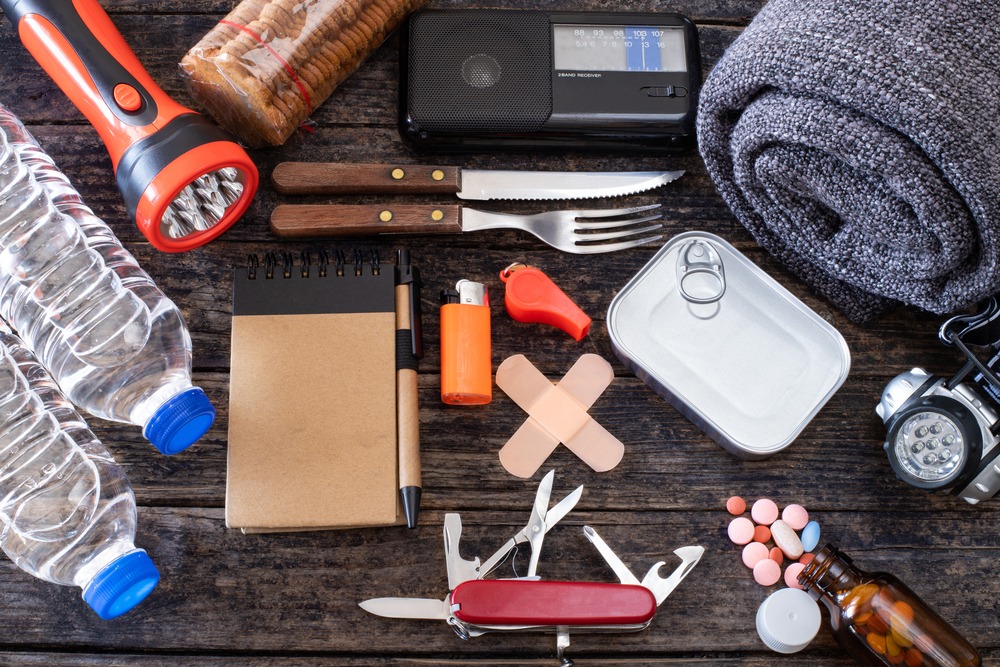If you’re living in an area that’s prone to earthquakes, it pays to be prepared. Even if you aren’t at the center of a disaster zone, earthquakes can devastate areas and leave you without electricity, and cut you off from the rest of the world for up to days at a time. But putting together a survival kit means finding a balance between what you absolutely need and how much space you have to actually store it.
How Much Do You Need?
The California Earthquake Authority suggests that you keep at least 72 hours – or three days – of basic supplies on hand in the case of a serious earthquake. At a glance, it may seem like even stowing away supplies is unnecessary, but you have to consider the worst-case conditions for an earthquake: no power, no gas, and no functioning water. In terms of water, you’ll want to have at least a gallon per person per day. In terms of food, that means around 1,500 to 2,000 calories per day per person.
Where Things Can Go Wrong
The biggest mistake you can make when putting together your emergency earthquake kit is to not properly evaluate your situation. Carefully take all of your family members into account when considering how much of everything you need, and that extends to your pets as well as your human family members. If anyone has a condition that could seriously impact them over the course of a few days, make sure to pack a week’s worth of extra medication and necessary supplies like epi-pens.
Are Your Supplies Safe?
If you don’t get the right supplies, your emergency earthquake kit won’t last you a day. That’s why it’s important to shop smart when stocking your kit. An earthquake can easily knock out the water filtration in an area – and even if it looks okay to drink, it isn’t always. That means that you’ll need to either invest in commercially pre-packaged water or purification tablets that can make water safely ingestible. The same goes for your food. Just because food is canned doesn’t mean that it has a shelf life that lasts forever. You’re eventually going to need to replace the food in your kit, but having the foresight to invest in food that lasts at least a few years will save you from a potentially disastrous error of forgetfulness.
Are Your Supplies Portable?
If an earthquake hits where you live, you might not be able to simply shelter in place. That means making sure that your earthquake kit can travel with you – and it ideally means being able to travel with your kit without the use of a car. Unfortunately, traditional stockpiling methods like cans and sealed gallons of water aren’t practically conducive to travel. That means finding alternatives that are more compact and practical. Plastic pouches provide a sensible packaging method for both food and water. Generally, you’ll get the most nutrition for your space with high-calorie energy bars. They may not provide you with the richest diet, but they offer the nutritional energy your body needs to keep pushing. In terms of water, purification tablets offer the best way to make the most of your space – though they should be ideally supplemented with small pouches of water for when you don’t have access to any.
Researching and finding the right materials for an emergency earthquake kit can take a lot of work, so you might want to consider replacing your existing kit with a professionally-crafted earthquake kit. They’ll guarantee you the most efficiently packed kit and one that will offer the longest shelf life for the essentials.

